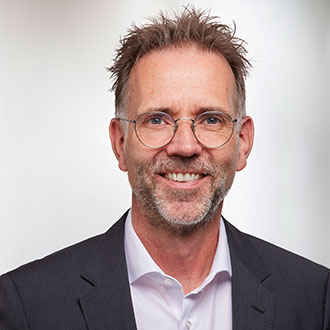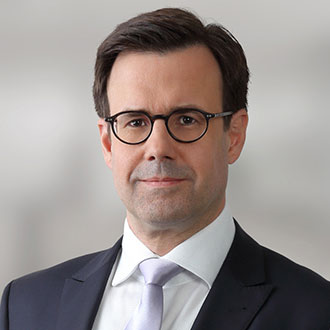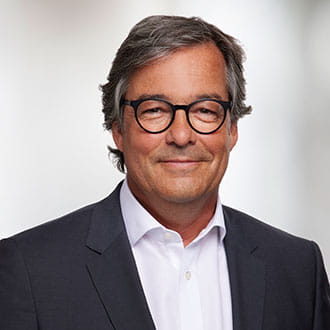News
ELTIF 2.0 and OIS: Momentum for infrastructure investments
Date:
11. December 2023
- Alternative Investments
- Regulation
Andreas Gessinger: The EU’s Long Term Investment Fund (ELTIF) was introduced in 2015 to promote sustainable and inclusive growth in Europe. The ELTIF 2.0 regulation comes into force at the beginning of 2024. How can this update be classified from a regulatory point of view and what is new regarding assets?
Marco Simonis: The ELTIF success story began somewhat sluggishly as ELTIF 1.0 encountered limitations. The requirements for risk diversification and borrowing were partially perceived as too strict. ELTIF 2.0 now increases flexibility and bridges the gap to UCITS. However, the ELTIF regime does not create a separate vehicle, but overlay national fund regulations. ELTIF is classified as an alternative investment fund, as it allows for the acquisition of assets that would not be suitable for UCITS. ELTIF 2.0 can be structured not only as a closed-ended fund investing exclusively in long-term and illiquid assets, but it can also be partially aligned with UCITS. Up to 45 percent of an ELTIF can be invested in UCITS assets.
Andreas Gessinger: Can you please elaborate further on the opportunities and limitations of the ELTIF?
Marco Simonis: ELTIF 2.0 is not limited to infrastructure investments. It now includes the acquisition of general tangible assets such as all types of real estate. Under ELTIF 1.0, there was a high entry barrier for tangible assets with a minimum threshold of ten million euros, and the definition of tangible assets was more restricted. In private equity, there used to be a cap on market capitalisation. Now, direct investments in private equity are allowed, and loans can be granted to qualified portfolio companies. Previously, funds of funds were not allowed under ELTIF 1.0, and investments were restricted to other ELTIFs or European social venture capital funds. Now, target funds can be UCITS or AIFs, if they are domiciled in the EU and managed by an EU AIFM. The assets of these target funds may be located in non-EU countries. Direct investments are also permitted in non-EU countries, provided that the target companies are not on an EU blacklist. This has expanded the geographic scope of investments. The regulators have ensured that funds available for acquisition do not include non-acquirable assets. This means that target funds are only allowed to invest in assets that the ELTIF can directly invest in.
Andreas Gessinger: Which legal forms are used for ELTIF vehicles?
Marco Simonis: Luxembourg legal forms are commonly used because the Grand Duchy serves as a favourable domicile for distribution across Germany and Europe. This is due to the regulatory flexibility available for both closed-ended and open-ended funds. Additionally, Luxembourg is home to legal forms that are already known from the UCITS framework, such as the FCP as a contractual fund, or the SICAV S.A., which as a stock corporation, is eligible for deposit and thus particularly well-suited for the private market. The ELTIF 2.0 allows for flexible structuring, enabling multi-layer structures, and facilitates the use of securitisation vehicles or special purpose vehicles to link target investments.
Andreas Gessinger: What are the challenges in launching and structuring an ELTIF?
Markus Bannwart: At the beginning of every structuring, you need to ask yourself which investors the product should appeal to. The target investor must be able to invest, as not every vehicle is accessible or suitable for every investor. Tax transparency is also a key issue in structuring, while for German investors the investment tax law is crucial. For German pension schemes or pension funds, their own specific investment regulation plays a role, while German institutional funds (‘Spezialfonds’) may be subject to legal restrictions regarding the investment strategy. In addition, for retail customers, minimum investment amounts and the terms of redemption options play a key role. Beyond understanding investor needs, the structurer must also be adept with various asset classes. For example, you need to clarify whether the capital management company (‘Service-KVG’) itself will manage the portfolio in-house or engage third-party asset managers. Other important questions include: How will the assets be valued? How will the transactions be organised? Are sub-structures required? Regarding the investment phase, you also need to decide how the asset manager would like to handle liquidity and which capital call mechanisms should be implemented.
Norman Finster: Capital calls will certainly not be used in the case of a retail ELTIF, for example. As with UCITS, private investors will have to pay for their fund shares in full when they subscribe.
Markus Bannwart: If an investor can make investments and the assets are optimally integrated, further fund details need to be clarified: Is a distribution or reinvestment desired? Is currency management or currency hedging required? Should institutional investors and retail investors invest via one share class, or should various entry channels be set up for a portfolio? Sustainability is also an important factor. Depending on its sustainability characteristics, a product can receive a qualification in accordance with Article 8 ("light green") or Article 9 ("dark green") of the SFDR (the EU’s Sustainable Finance Disclosure Regulation).
Marco Simonis: The fund initiator must ensure that an ELTIF is not structured without sufficiently considering regulatory requirements. Not all questions have been resolved. For instance, there are ongoing discussions about how redemption rights should be structured, with the expectation that these will be settled by early 2024. Fund associations are advocating for flexibility and product-specific considerations. They aim to avoid strict rules regarding the frequency of redemptions, minimum holding periods, and notice periods. In terms of liquidity management tools, while these are well-known and tested in Germany, it is important to be prepared if the regulatory technical standards (RTS) propose different requirements. The issue of borrowing is also relevant. It is permissible to borrow up to 50 percent of the net value of the fund's assets and even up to 100 percent if only (semi-) professionals are invested, but the specifics matter. We do not anticipate any real showstoppers in the RTS, especially since structurers can consult with regulatory authorities during product conception to clarify any open questions.
Norman Finster: We are still observing uncertainties in the Regulatory Technical Standards (RTS) of the European Securities and Markets Authority (ESMA) regarding the planned secondary market, where shares of closed-ended ELTIFs can be sold. It is currently unclear how the market will be organised and who will be responsible for it – will it be the distributor, the asset manager, or other market participants, such as a market maker?
Andreas Gessinger: Are there any unique aspects in the administration, distribution, and reporting of ELTIFs?
Norman Finster: Regarding administration, the question arises about how to represent liquid and illiquid assets within a system and integrate them into fund accounting and reporting. Currently, there is no system that can do both equally well. Alternative investment managers are also not used to managing semi-liquid vehicles. Alternative funds for institutional investors are typically commitment-based, whereas a retail product requires immediate investment upon payment of the subscription amount.
On the distribution side, an ELTIF with retail investors functions in the same way as a UCITS fund. It requires integration with a platform, Swift connectivity, a distribution network, and trained professionals. ELTIFs have so far often been launched by multi-asset initiators who already have a large UCITS footprint and are connected to retail distribution networks. While alternative asset managers are good at using placement agents to raise institutional money, they find it challenging to access private client funds due to the lack of partnerships with retail distributors. However, this area is currently evolving.
In terms of reporting, an ELTIF is required to fulfill semi-annual and annual reporting duties. These obligations tend to follow the legal framework selected for the ELTIF rather than the ELTIF regulation itself. The asset manager of an ELTIF is subject to AIFMD reporting requirements.
Marco Simonis:
There are certain requirements for the annual report; for instance, a cash flow statement is needed. Information about the portfolio companies must also be provided. A key aspect is the disclosure of costs. There are specific rules under the RTS framework, but details are yet to be clarified.
Andreas Gessinger: What potential do you see in ELTIF 2.0, and what trends are you observing in the market?
Markus Bannwart: There’s already a considerable interest in ELTIFs. There is both a need for infrastructure investment and a demand from investors for such assets. Now, with this instrument, we can link the two. Once regulatory aspects are more established next year, we anticipate a marked increase in interest in ELTIFs. They are becoming much more accessible to retail investors, especially with the elimination of barriers like the minimum investment of 10,000 euros and the ELTIF suitability assessment. In addition, despite some assets being illiquid, individual redemption mechanisms can be offered.
Marco Simonis:
Numerous ELTIF 2.0 funds have already been applied for. We will see a diverse spectrum: funds of funds as well as vehicles investing directly in individual asset classes or multi-asset class funds. The key to success is flexibility for the asset manager. He now has the freedom to not only initiate a strategy, but also to adapt it through various market phases.
Norman Finster: We also observe that no ELTIF project is like the other. In terms of success, the Scope study “European ELTIF Study Market Development and Perspectives “ dated March 24, 2023, indicates that the ELTIF market grew by just over 50 percent in 2022 compared to the previous year. The volume at the end of 2022 was approximately 11.3 billion EUR. This significant growth underscores the enormous potential of ELTIFs. Scope anticipates the ELTIF market to continue growing, potentially reaching between 35 and 50 billion EUR in committed volume by 2028.
Andreas Gessinger: We have got another topic on our agenda – open-ended infrastructure funds. What makes them unique, and what potential do you see for them?
Markus Bannwart: Since the revision of the German Investment Code (‘Kapitalanlagegesetzbuch’) in summer 2021, infrastructure investments can now be offered as open-ended mutual funds in Germany. This creates new opportunities, especially for private investors. Being a German-regulated fund allows for a broad distribution to retail customers in Germany through various platforms.
Marco Simonis: The German OIS is an advancement of the established open-ended mutual real estate fund in the form of a German Sondervermögen. The vehicle cannot invest directly in infrastructure, but in infrastructure project companies, with the term being broadly defined. Possible investment targets can either be companies involved in renting or distributing, or companies with multi-layer structures. Borrowing at the level of portfolio companies is possible with appropriate structuring. Up to 30 percent of an OIS can be invested in real estate, with a primary focus on direct investments. Eligible securities may also be added to the mix. An OIS is required to maintain a minimum liquidity of ten percent, and the rules for minimum holding and notifications are similar to those of open-ended mutual real estate funds. Redemptions are allowed at most semi-annually, but at least annually. As a new vehicle, the OIS has gained prominence and is now ready for practical application.
Andreas Gessinger: Universal Investment recently launched an open-ended infrastructure fund with the investment and asset manager KGAL. Mr Bannwart, what practical experience have you gained in the process?
Markus Bannwart: In November, as a capital management company, we launched an open-ended public AIF. The aim of the fund is to build a diversified pan-European portfolio, focusing on sustainable energy generation. This Article 8+ fund under the SFDR allows German retail investors to directly invest in a broadly diversified renewable energy portfolio with a small investment amount. As one of the first to launch such a product, we had limited experience in terms of fund documentation and coordination with all parties involved, especially the supervisory authorities. During the launch phase, we had only initial drafts agreed upon by associations and BaFin, which we were able to further refine and align in cooperation with the supervisory authority.
On the operational side, challenges include implementing a daily valuation and trading of shares in a relatively illiquid portfolio, such as infrastructure project companies. When selecting our partners, we had to manage with no prior experience, whether it was with custodians or valuers. Many valuers were experienced in valuing infrastructure investments in German institutional funds (‘Spezialfonds’), but not in a public AIF. This project once again highlighted what sets us apart: our willingness to take innovative paths as pioneers with our partners. In the end, all participants benefit.
Andreas Gessinger: How can Universal Investment contribute to the success of ELTIF 2.0 and open-ended infrastructure funds?
Markus Bannwart: We have extensive experience in understanding various investors and assets. We have learned from hundreds of fund launches how to structure and market, organize transactions, and manage and value assets. Risk management, portfolio management, and reporting are among our core competencies, which we apply to both securities and illiquid assets at our fund domiciles in Ireland, Luxembourg, and Germany. In project management, we offer support in selecting service providers and in their onboarding. With our in-depth experience, we can combine both worlds – illiquid and liquid assets – in a single product.
As the first step, asset managers can discuss product ideas with us for planned fund launches. We are happy to share our market insights and experience with clients. Once the vehicles have been launched, we support their distribution by integrating them with distribution platforms, of which more than 50 are already connected to us. These platforms are already partly dealing with ELTIF and open-ended infrastructure fund issues and will continue to offer these products in the future.
©2023. All rights reserved. This publication is exclusively intended for the use of professional and semiprofessional investors and is not intended for private investors. This publication is for marketing purposes only. The information provided should not be taken as recommendation or advice. All information is based on publicly available sources which we consider to be reliable. We cannot guarantee the accuracy or completeness of the information, and no statement in this publication is to be understood as such a guarantee. The opinions expressed in this publication are subject to change without notice. Information on historical performance do not allow conclusions about or otherwise guarantee future performance. The sole basis for the acquisition of units is the Fund documentation for the respective investment fund, which is available free of charge at Universal Investment and in the Internet at www.universal-investment.com. This does not constitute an offer or invitation to subscribe for units or shares of an investment fund. The information presented should not be considered reliable in this sense, as it is incomplete with regard to the possible interpretation as a subscription offer and may still be subject to change. A summary of your investor rights can be found at www.universal-investment.com/en/Corporate/Compliance/Investor-rights. In addition, we would like to point out that Universal Investment may, in the case of funds for which it has made arrangements as management company for the distribution of fund units in other EU member states, decide to cancel these arrangements in accordance with Article 93a of Directive 2009/65/EC and Article 32a of Directive 2011/61/EU, i.e. in particular by making a blanket offer to repurchase or redeem all corresponding units held by investors in the relevant member state.




